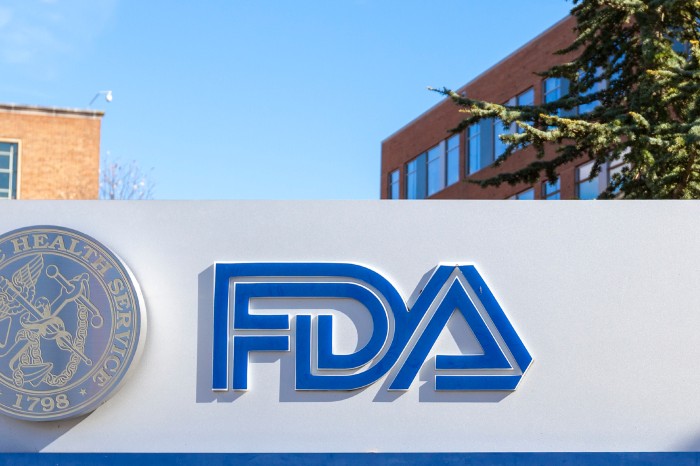The new article highlights the aspects related to additional submission types that could be used in specific cases and also describes the approach to be applied when no relevant submission type is used.

Table of Contents
The Food and Drug Administration (FDA or the Agency), the US regulating authority in healthcare products, has published a guidance document dedicated to the requests for feedback and meetings for medical device submissions under the Q-Submission program. The document is intended to provide an overview of the applicable regulatory requirements and additional clarifications and recommendations to be considered by medical device manufacturers and other parties involved to ensure compliance thereto. In particular, the document describes a voluntary program under which a party interested in placing a medical device on the US market may obtain feedback from the authority before submitting the main application. Such an approach is expected to facilitate and streamline the regulatory procedures and also to reduce the review burden for the authority by contributing to the improvement of the overall quality of submissions.
It is also important to mention that provisions of the guidance are non-binding in their legal nature, nor are they intended to introduce new rules or impose new obligations. The authority explicitly states that an alternative approach could be applied, provided such an approach is in line with the existing regulatory framework. It has been agreed with the authority in advance.
Other Q-Submission Types
The scope of the guidance covers, inter alia, additional types of submissions available to the medical device manufacturers. According to the document, they include:
- PMA Day 100 Meetings;
- Agreement and Determination Meetings;
- Submissions associated with the Breakthrough Devices Program (including a Breakthrough Device Designation Request and Interaction for Designated Breakthrough Device);
- Submissions associated with the Safer Technologies Program (including STeP Entrance Request and SteP Interaction Submission);
- Accessory Classification Requests for Existing Accessory Type, as well as for a New Accessory Type.
According to the document, the aspects related to the abovementioned request types are described in detail in the respective guidance documents issued by the FDA. Moreover, the authority reserves the right to introduce new types of Q-Submissions, should it benefit the review process.
Other Uses of the Q-Submission Program
The document also pays attention to other uses of the Q-Submission program – the situations when the interaction in question neither falls within one of the existing request types nor reasonably requires a new request type to be created specifically to address it. According to the guidance, in such cases, the authority will apply the framework related to the Informational Meeting Q-Submission type. The guidance provides a few examples illustrating the way the said approach will be applied, namely:
- Request for FDA feedback on specific questions or cross-cutting policy matters from other government agencies, non-profits, trade organizations, and professional societies.
- Requests for recognition of publicly accessible genetic variant databases;
- Request for FDA feedback on design elements of a clinical study that do not fall within the scope of a Pre-Submission, and, therefore, would not be eligible for discussion under a Pre-Sub.
- Combination product agreement meetings (CPAM) as defined under section 503(g)(2)(A) of the FD&C Act.
- Requests for FDA feedback related to compliance actions (e.g., an Informational Meeting Q-Sub could be used to request FDA feedback regarding inspectional observations listed in FDA Form 483 to aid in the preparation of a response).
As described in the previous article dedicated to the Q-Submission program, under the general rule, Informational Meetings are intended for the interested parties to be able to share information with authority. At the same time, any feedback from the latter is not expected. At the same time, such feedback could be provided when Informational Meetings Q-Submissions are used for tracking purposes without formal interaction.
Interactions Outside the Q-Submission Framework
The authority also mentions that some interactions between medical device manufacturers and the authority may not occur within the Q-Submission Program. This includes other mechanisms and approaches interested parties may apply in order to obtain feedback from the authority. Some of them are informal in their nature, while for others, a formal submission will be required.
According to the document, such interactions include, inter alia, the following ones:
- Requests for feedback regarding the development of a Medical Device Development Tool (MDDT), previously tracked as Informational Meeting Q-Submissions, are now tracked with a universal tracking number (UTN);
- Administrative questions or questions about the submission process;
- Teleconferences or emails with FDA staff discussing general FDA policy, and procedures or simply review clarification questions;
- Interactive review of issues identified while an IDE, IND, or marketing submission is under active FDA review;
- Requests for appeal meetings made to CDRH or CBER;
- Requests for Designation (RFD) or Pre-RFDs, which are submitted to the Office of Combination Products (OCP) when the classification of a medical product as a drug, device, biological product, or combination product, or the product’s Center assignment (or both), is unclear or in dispute;
- Section 513(g) Requests for Information provides a means to obtain information regarding the class in which a device has been classified or the requirements applicable to a device under the FD&C Act.
In summary, the present FDA guidance describes additional types of submissions in detail and highlights the key points associated thereto. The document also explains how the Q-Submission program should be applied in case no submission type meets the particular case.
How Can RegDesk Help?
RegDesk is a holistic Regulatory Information Management System that provides medical device and pharma companies with regulatory intelligence for over 120 markets worldwide. It can help you prepare and publish global applications, manage standards, run change assessments, and obtain real-time alerts on regulatory changes through a centralized platform. Our clients also have access to our network of over 4000 compliance experts worldwide to obtain verification on critical questions. Global expansion has never been this simple.


